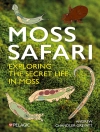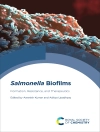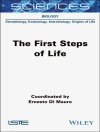This book provides up-to-date information on the state of the art in applications of biotechnological and microbiological tools for protecting the environment. Written by leading international experts, it discusses potential applications of biotechnological and microbiological techniques in solid waste management, wastewater treatment, agriculture, energy and environmental health.
This first volume of the book “Environmental Microbiology and Biotechnology, ” covers three main topics: Solid waste management, Agriculture utilization and Water treatment technology, exploring the latest developments from around the globe regarding applications of biotechnology and microbiology for converting wastes into valuable products and at the same time reducing the environmental pollution resulting from disposal. Wherever possible it also includes real-world examples. Further, it offers advice on which procedures should be followed to achieve satisfactory results, and provides insights that will promote the transition to the sustainable utilization of various waste products.
Cuprins
Chapter 1. Perspectives of Environmental Microbiology and Biotechnology.- Chapter 2. Towards waste valorization: A promising and sustainable approach of waste management.- Chapter 3. Bioplastics: A Green Approach toward Sustainable Environment.- Chapter 4. Microbial procession during decomposition of organic wastes.- Chapter 5. Electronic waste management: Challenges and opportunities.- Chapter 6. Heavy metal pollution: An insight towards its infiltration, impact and remediation.- Chapter 7. Biotransformation of Chitinous Waste into Value-added Products.- Chapter 8. Utilization and management of agricultural wastes for bioenergy production, weed control and soil improvement through microbial and technical processes.- Chapter 9. Plant Tissue Culture: Beyond being a Tool for genetic engineering.- Chapter 10. Microbial and Biotechnological approaches in the production of biofertilizer.- Chapter 11. A prelude of plant strategies to deal with the peril of salinity: an archive of regulatory responses.- Chapter 12. Prime techniques for Pre-and post-treatments of anaerobic effluents and solids.- Chapter 13. Nanoscale Materials and Their Potential Application in Potable Water and Waste Water Treatment.- Chapter 14. Efficiency of Graphene-based Forward Osmosis Membranes.- Chapter 15. Constructed Wetland: A Green Technology for Wastewater Treatment.
Despre autor
Anoop Singh has a Ph D in Botany (2004). He is a Scientist at Department of Scientific and Industrial Research (DSIR), Ministry of Science and Technology, Government of India. Before joining DSIR, he worked at Technical University of Denmark, Denmark; University College Cork, Ireland; The Energy and Resources Institute (TERI), New Delhi, India; Indian Agricultural Research Institute (IARI), New Delhi, India; Banaras Hindu University, Varanasi, India and VBS Purvanchal University, Jaunpur, India. He has visited several European countries and participated in several international conferences. He has published more than 50 research articles in scientific journals (h-index 27, citation 7187) and also published three edited books with Springer and CRC Press. He is a member of several scientific communities and serving as Editorial board member for a number of journals besides being a reviewer. His research interests are focused on sustainable agriculture, wastemanagement through agriculture, the utilization of industrial, agricultural and household waste for eco-friendly energy production, renewable energy and their life cycle assessment (LCA).
Shaili Srivastava is an Associate Professor in the Amity School of Earth and Environmental Sciences, Amity University Haryana. Dr Srivastava has done masters and Ph.D. from G.B. Pant University of Agriculture and Technology with specialization in Microbiology and Biotechnology. Before joining Amity, she worked as a lecturer in college and a postdoctoral fellow in Jawaharlal Nehru University, New Delhi. Her research focuses on waste water treatment, degradation of PAH, remediation of heavy metal, microbial sequestration of CO2, biofuel and biosurfactant production, genomics and proteomics involve in CO2 sequestration and value added product formed by microorganisms. She had visited Murdoch University, Perth, Australia, as a visiting research fellow and attended various international conferences as a speaker. Dr Shaili had published twenty-eight research papers in reputed refereed international journals. She had also published one book and 8 book chapters. She is a life member of various scientific communities and a reviewer of various international journals. She had completed three research projects sponsored from CSIR, UGC, and DST. She had eighteen years of research and teaching experience. She had a Google Scholar profile of h-index 15 and total citations are 1300.
Dheeraj Rathore is an Assistant Professor in the School of Environment and Sustainable Development at the Central University of Gujarat (CUG), Gandhinagar, India. He obtained his Ph.D. in Botany from AAI-DU, Allahabad, India and his M.Phil. in Environment Management from Vikram University, Ujjain, India. Before Joining CUG, he worked at The University of Dodoma, Tanzania. He has 2 books and 40 peer-reviewed articles (h-index 13)to his credit. He is a member of several scientific communities besides being a reviewer. His research interest focused on ecology, environmental physiology, biofuel production, and waste utilization.
Deepak Pant is a Senior Scientist at the Flemish Institute for Technological Research (VITO), Belgium. His research focuses on electrosynthesis and bioenergy, specifically, combining electrochemical and biological conversion systems with a focus on CO2 conversion and their combination with separation systems. He has 5 books (on Springer, CRC Press and Elsevier), 6 Patents, 130 peer-reviewed publications with 9900 citations (h-index 56) and 30 book chapters to his credit. He is the member of scientific communities like ISMET, ISE, BES, BRSI, IFIBiop and AMI. He is serving as Editor of one scientific journal and is on the Editorial Board of 6 other journals.












